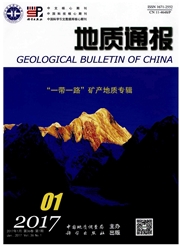

 中文摘要:
中文摘要:
如何根据一定数量有代表性样品的统计结果建立土壤元素各化学形态分量与全量或其他土壤参数的关系方程.是区域生态地球化学评价工作中急需解决的问题之一。提出了建立这类回归方程需要注意并坚持的主导性原则、简洁性原则、直接性原则、拟合优度和可识别性原则、理论一致性原则,回归方程还需要用抽取检验样品、划定预测区间等方法检验其合理性。对成都经济区土壤中有益元素和有害元素依据以上原则进行了统计分析,得到元素各形态.尤其是有效态含量与元素总量或其他重要土壤性质的回归方程,为利用面积性调查数据进行区域生态地球化学评价奠定了基础。
 英文摘要:
英文摘要:
How to establish a relation equation of various chemically partitioned component concentrations for elements in soils and their total concentrations or other soil parameters according to the statistical results of certain numbers of representative samples is one of the problems that need urgent solution in regional ecogeochemical assessments. This paper suggests that we should adhere to the dominant principle, concise principle, direct principle, best fitting, recognizable principle and principle of theory uniformity in the establishment of such regressions, i.e. selecting dominate factors, using concise regression models, taking factors that is directly linked to the results as independent variables, best fitting and using the uniform theory. The validity of the equations must also be tested by selecting the validation dataset and determining the prediction intervals. Examples are given in this paper by performing a statistical anal- ysis of toxic and nutrient elements in soils in the Chengdu economic region according to the aforesaid principles, and the regression relations of the concentrations of various species of elements, especially those of the available species, and the total concentration of elements or other important soil properties. These equations provide a basis for regional ecogeochemical assessments of areal survey data.
 同期刊论文项目
同期刊论文项目
 同项目期刊论文
同项目期刊论文
 期刊信息
期刊信息
